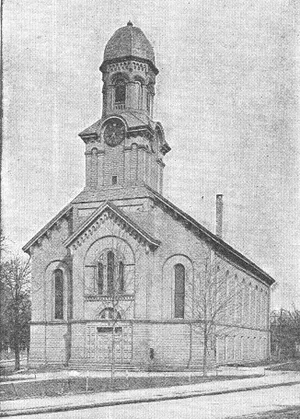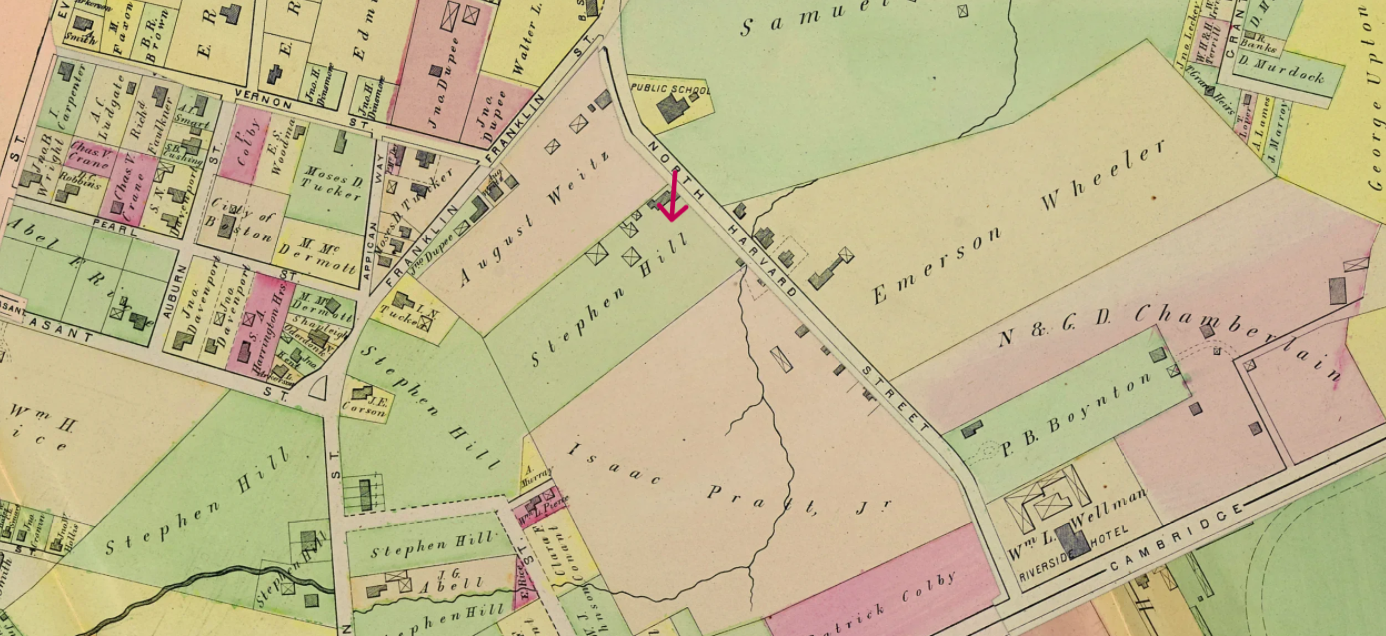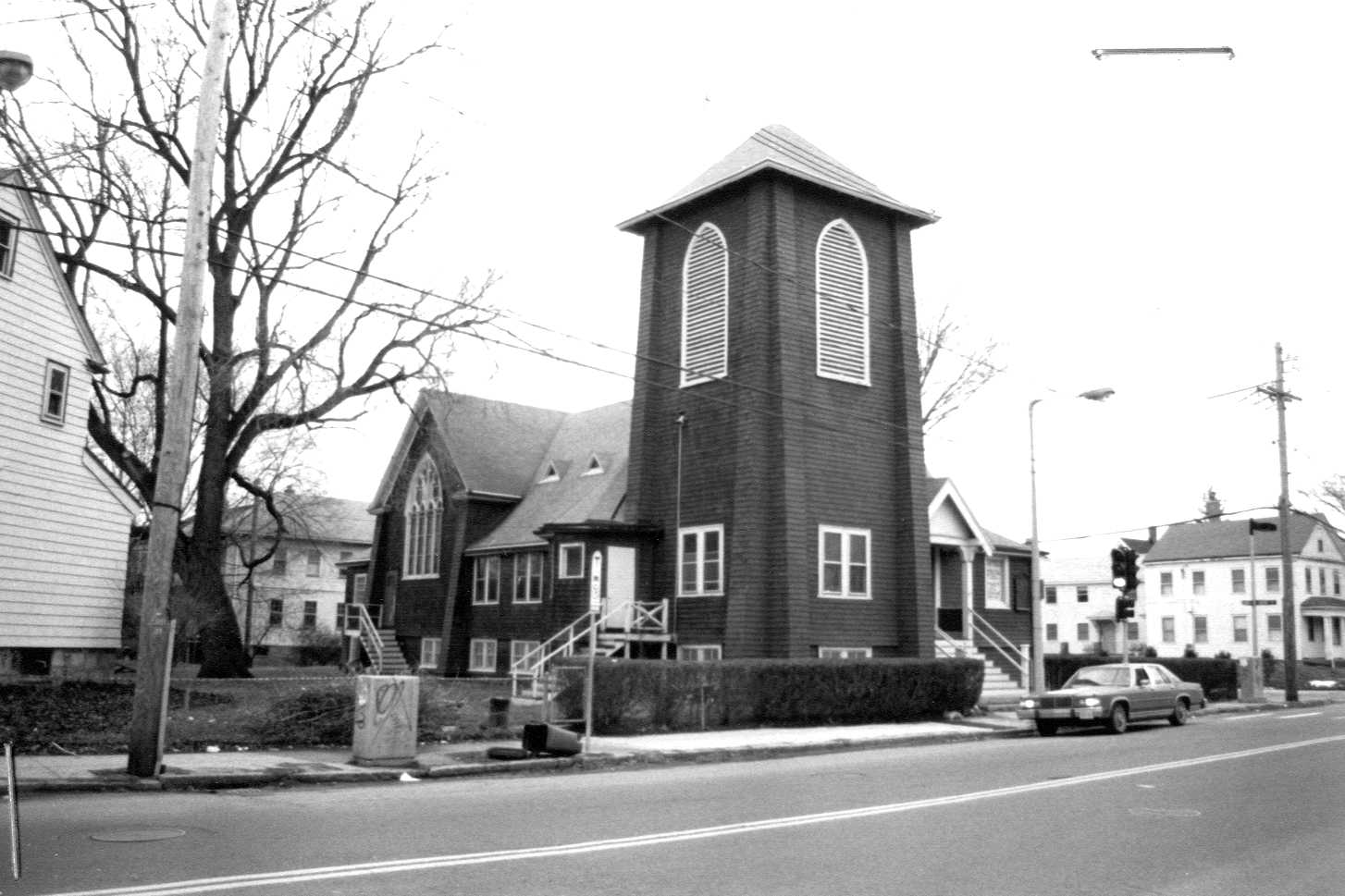
April 17, 2024 A new life for Allston’s Hill Memorial Baptist Church
If you travel down North Harvard Street in Allston, you’ll encounter the Hill Memorial Baptist Church, a rare wooden frame ecclesiastical building that combines Shingle and Late Gothic Revival styles of architecture. Sheathed in wood shingles with a 58’ bell tower and a gable roof, the 1903 structure speaks to an early history of the Allston neighborhood and a tiny parish church that struggles to maintain visibility in this rapidly changing neighborhood. 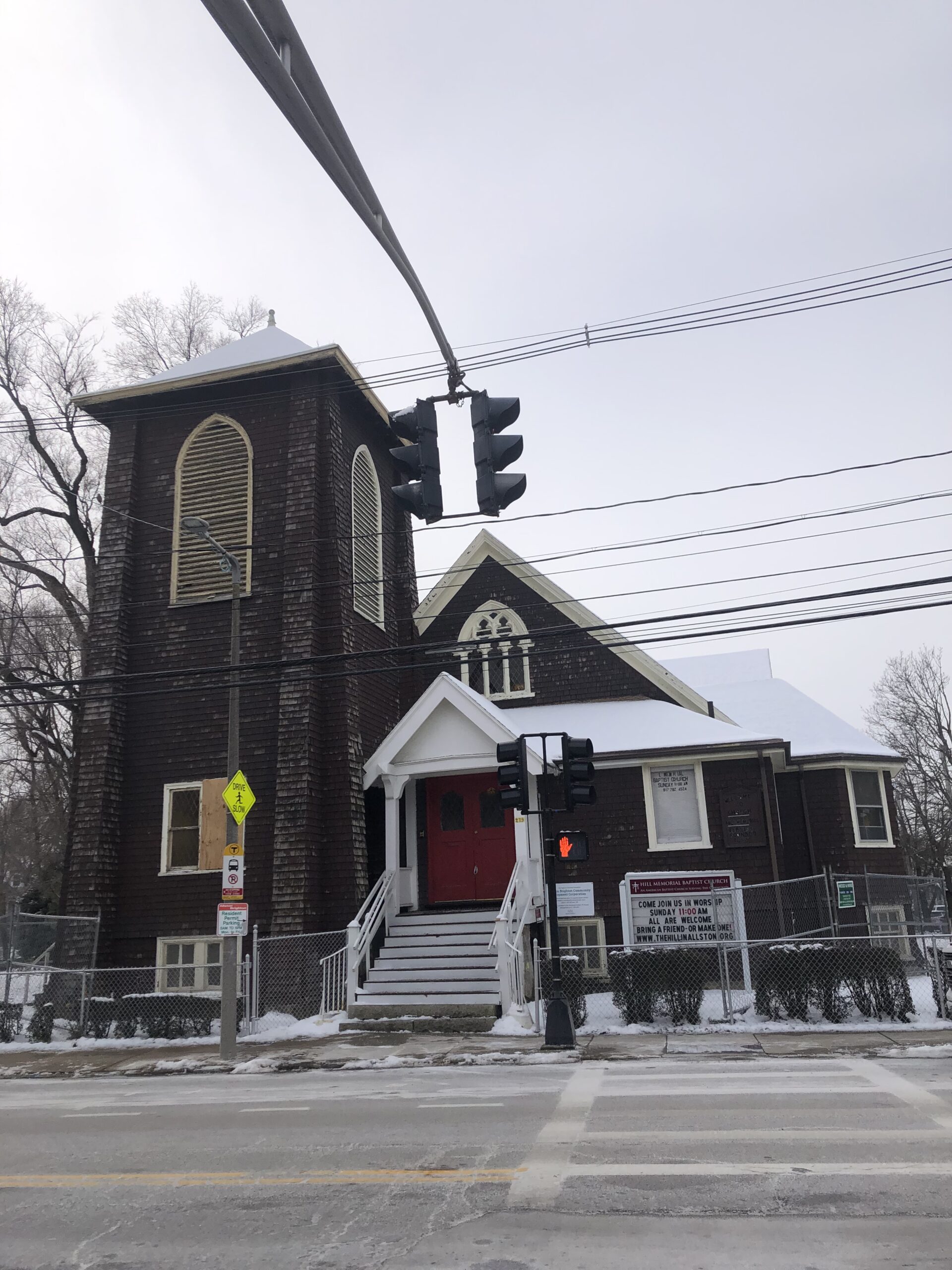
Allston-Brighton’s 19th century history of livestock, abbatoirs and railroad connections determined the trajectory of the area’s development. Brighton, originally named Little Cambridge and part of the Town of Cambridge, was established as a cattle market in 1775 to feed the Continental Army. Livestock operations only continued to bring more development to Little Cambridge. In the early 1800s, the town of Cambridge failed to repair the Great Bridge over the Charles River that connected Little Cambridge to Harvard Square, halting all business via that connection. In response, residents of Little Cambridge seceded and established the town of Brighton in 1807.
By the mid-1800s, the livestock population in Brighton far exceeded the human population. With that came the dire need for waste management, and the consolidation of pastureland and slaughterhouses to make room for the town’s residential development.
In 1867, the Boston and Albany Railroad opened a depot in east Brighton. The year after, the station and post office in east Brighton were named Allston. Some believe the name came from the Cambridge-port painter Washington Allston, whose painting entitled “Fields West of Boston” depicted the area that today is Allston, and is thought to be inspiration for the neighborhood’s new name.
In the 1870s, a handful of the most influential businessmen in the Town of Brighton successfully petitioned for their town to be annexed to the City of Boston, motivated by the desire to extend the new water and sewage infrastructure of the city to Brighton’s residents and businesses. In 1872, cattle operations were consolidated to the Brighton Abattoir, and in 1874 the town of Brighton was annexed to the City of Boston. In 1889, electric street cars were introduced, effectively making Allston-Brighton a street-car suburb. Livestock operations ceased entirely by the mid-20th century, replaced by the rapidly growing auto industry.
Brighton and Allston’s formation is prologue to the population explosion that ensued in all of Boston, the Baptists were a small group among Allston-Brighton’s faith communities until the 1850s, at which time their congregation had grew substantially enough that they required a separate place of worship. The Brighton Avenue Baptist Church was completed in 1857 and became an important landmark for Union Square (the site occupied by the Union Square Fire Station today). However, a 1931 fire tore through the Brighton Ave Baptist Church, destroying the beloved structure. It is due to the loss of this Union Square landmark, that the communities of Allston-Brighton wish to preserve the Hill Memorial Baptist Church, as the last remaining Baptist church in Allston-Brighton.
As a neighborhood grew in the north Allston area, Hill Memorial Baptist Church was constructed in 1903 on N Harvard Street, a major thoroughfare in Allston. The land the church sits upon was donated by George A. Hill and his sister Georgia A. Hill, on the condition that the chapel built there be named after their father, Deacon Samuel Hill. The Hills had owned and farmed this large tract of land since the mid-1870s, and the Hill family also had a hand in the early establishment of the town of Brighton. In 1806, Aaron Hill was part of a committee appointed by the Cambridge town meeting “to confer with such persons as may be appointed by the Legislature that the South Parish in this town be set off as a separate town.” And later, Benjamin Hill served on Brighton’s first Board of Selectmen.
The Hill’s donation of 13,000 SF of land was initially refused by the Baptists of Allston. It was the Baptist Sunday School Association that took the Hill’s up on their generous offer. In 1897, the Baptists purchased the Sunday school of the Congregationalists on Western Avenue for $2,000, and moved it to the Hill land. The Sunday school building was remodeled and its first classes were held in 1898. The church was constructed in 1903, but it is not known if the Sunday school building had been incorporated into the structure of the Hill Memorial Baptist Church. The architect of the Hill Memorial Church is also unknown.
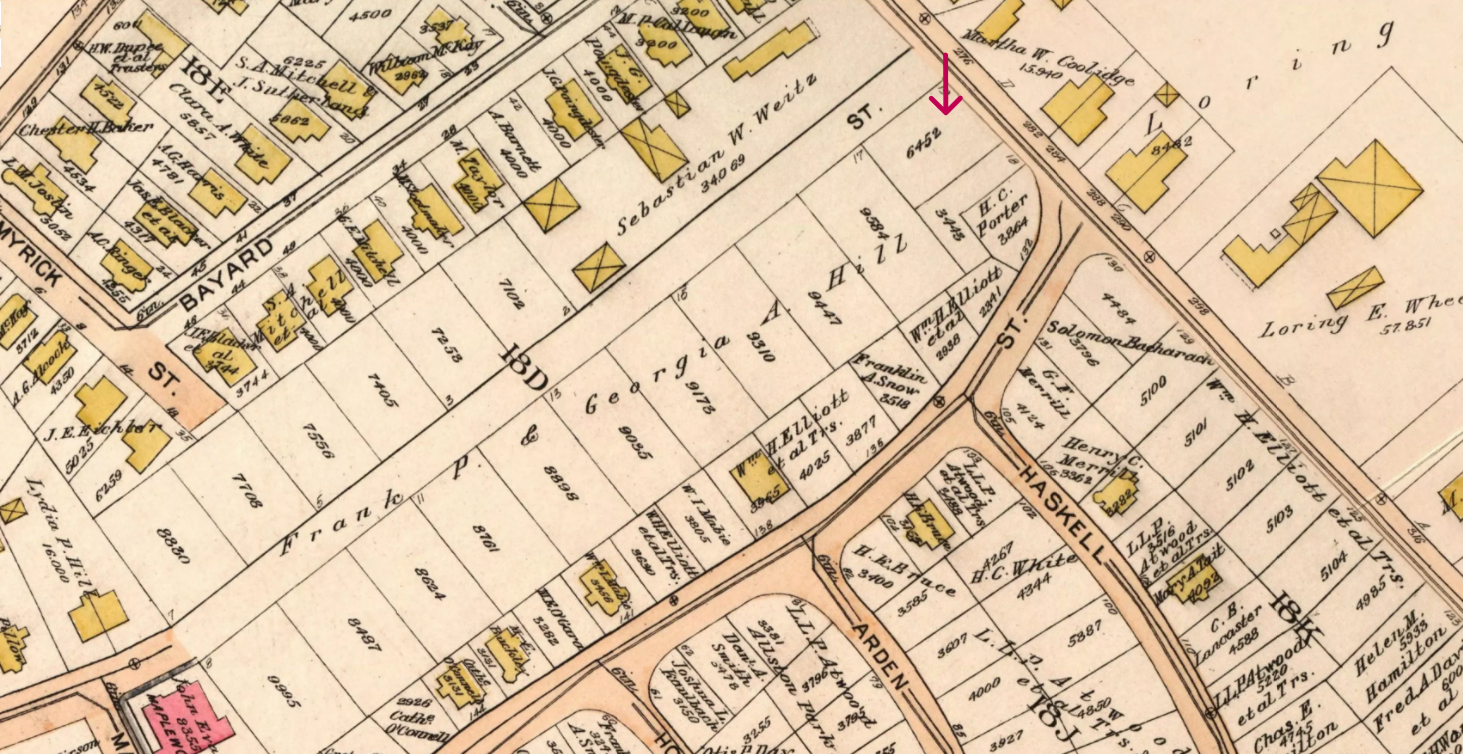
1897 Brighton Bromley Atlas shows the Hill parcel divided, likely a reflection of the recent donation of Hill land to the Baptist Sunday School Association.
The 1996 assessment by the Boston Landmarks Commission (BLC) noted the unique architectural details of the church, and specified that the unusual presence of the tapered buttresses that appear at each corner, were more typically observed in masonry Gothic Revival churches. Visually, the breath of the square tower’s walls, large scale of its louvered pointed arch windows, projecting corner buttress and rough textures of its wood shingles provides the Hill Memorial Baptist Church with a solidity and substance that approaches that of a masonry structure. The pointed arch stained glass windows of the upper walls of the north and south transepts are also noteworthy details.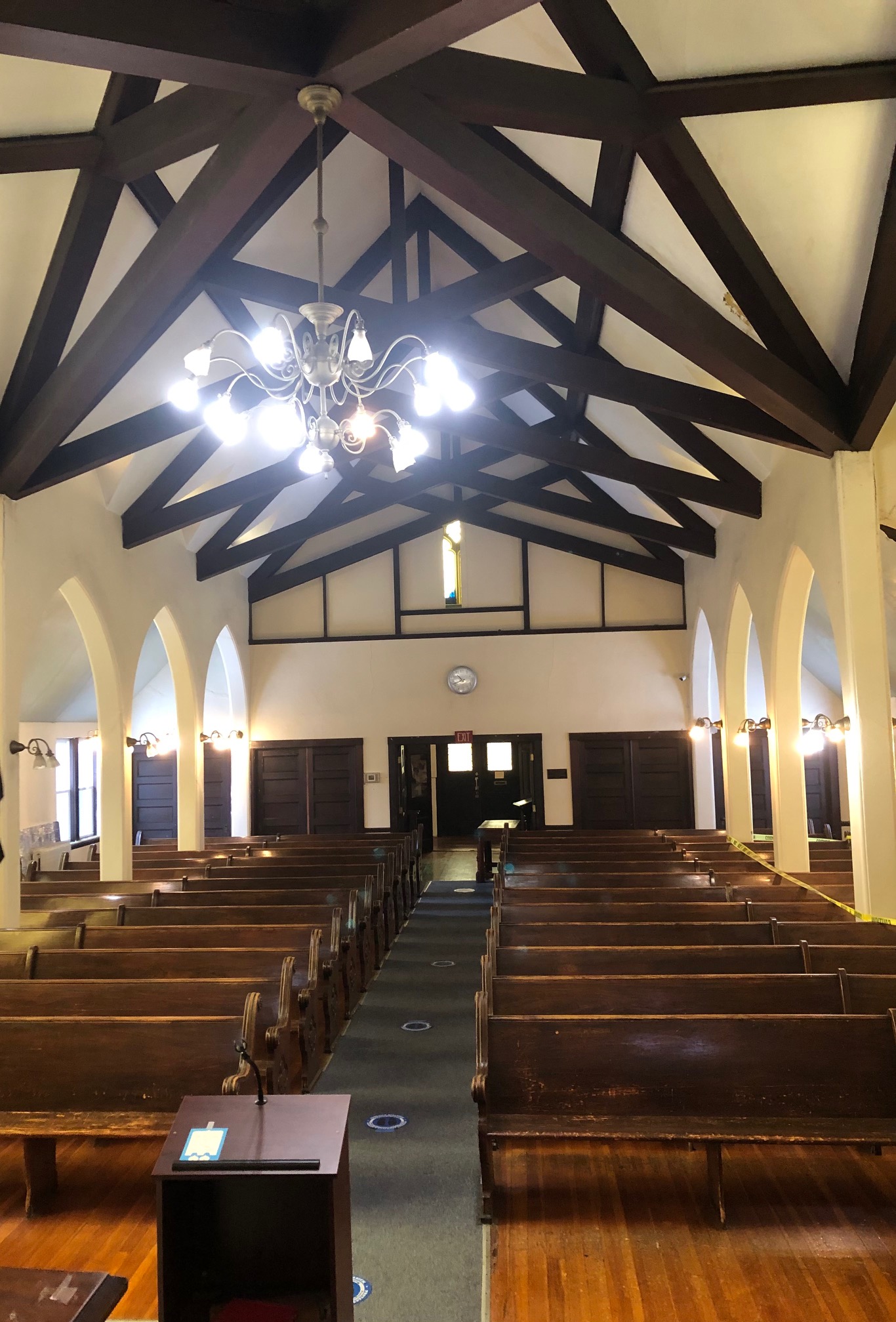
The BLC report mentioned that the only major changes to the Hill Memorial Baptist Church was the addition of a full length brick chimney at the northwest corner of the building and the replacement of what were original slate shingles with modern asphalt shingles. The report includes that a Brighton item article dated August 1,1903, states that “the exterior will be shingles and stained and the roof-slated” and “the inside finish will be in natural woods, with hard wood trestles overhead and leaded glass in the windows.”
The Hill Memorial Baptist Church and site were purchased by the Allston-Brighton Community Development Corporation (ABCDC) in 2023 with plans to preserve the church and build much-needed affordable, age-restricted housing in the area surrounding the church. ABCDC’s Executive Director John Woods said: “By working together with some amazing partners, we are expecting to fill a pivotal gap in the continuum of affordable housing by creating more opportunities for folks to age in place in the community that they call home.”




